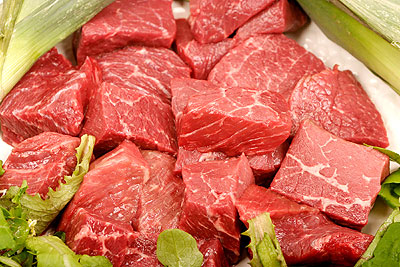When Immaculée Nyinawase diagnosed with Type II diabetes last year, the 51-year-old initially did not grasp the enormity of her predicament. She continued to live in denial with the most common type of diabetes, she remorsefully reminisces.


When Immaculée Nyinawase diagnosed with Type II diabetes last year, the 51-year-old initially did not grasp the enormity of her predicament. She continued to live in denial with the most common type of diabetes, she remorsefully reminisces. Soon after, however, it brutally dawned on the overweight working mother of four that attempts to overcome symptoms by losing weight or following a diet regimen and exercise plan were not working for her. She had to stomach the doctor’s counsel. "The saddest part is that, apparently, I had diabetes for a long time without knowing. Before testing, I remember feeling tired and being very thirsty every morning. I could often have extreme unexplained fatigue…unusually frequent urination and other symptoms,” says Nyinawase. In addition to tracking her blood sugar levels, the doctor advised Nyinawase to kick her penchant for red meat away, as it was shortening her lifespan.But what is red meat? Many research findings connect frequent red meat consumption to increased rates of heart disease and premature death, among others. Others point out that red meat can actually play an important role as part of a balanced diet. However, the seemingly ‘never-ending’ debate on red meat’s possible health benefits and harmful effects on our health should best start by an understanding what it is. According to Wikipedia, red meat in traditional culinary terminology is meat which is red when raw and not white when cooked. Red meat includes the meat of most adult mammals. In gastronomy (the study of food and culture with a particular focus on gourmet cuisine), red meat is darker-coloured meat, as contrasted with white meat or light meat which refers to the lighter-coloured meat such as of poultry. Generally, meat from adult mammals such as cows, sheep and horses is considered red, while chicken and rabbit meat is considered white. The US Department of Agriculture, says all meats obtained from livestock are red meats because they contain more myoglobin than chicken or fish. Nutritional valuesDr Rachna Pande, a specialist in internal medicine at Ruhengeri Hospital, says eating small quantities of ground or lean meat provides iron, proteins, vitamin B complex and zinc to the body. It also helps boost immune and endocrine system of the body, she says. In fact, what determines the nutritional definition of the colour of meat is the concentration of myoglobin, an iron- and oxygen-binding protein found in the muscle tissue of vertebrates and mammals. Red meat contains large amounts of iron, creatine, minerals such as zinc and phosphorus, and B-vitamins: (niacin, vitamin B, thiamin and riboflavin). Red meat is the richest source of lipoic acid, a powerful antioxidant. Red meat contains small amounts of vitamin D. The liver contains much higher quantities than other parts of the animal.
----------------------------------------------------
How much is too much? Some scientists say people should not consume more red or processed meat than an average 70 grammes a day, which is about 500 grammes a week. Recommendations from 1998 suggest 90 grammes a day is a healthy amount and say those eating more than 140 grammes a day should cut back. In 2007, the World Cancer Research Fund recommended a limit of 500 grammes a week. However, according to Dr Pande, "some studies claim it should not be consumed at all, whereas some claim one to twice a week, is safe.” Sudipta Talapatra, a nutritionist in Kigali, says the recommended daily intake of protein is 1 gramme per kilogramme of body weight. A healthy adult should consume about 65 to 70 grammes of protein. "Most of this should come from lean meat–chicken, fish, sea food–and legumes. One serving of meat should be approximately 65 to 100 grammes per day, which can be easily made up with an egg and one ounce of meat,” Sudipta said. "Red meat should be consumed not more than three times a week and the portion size should be limited to 100 grammes cooked weight per day.”One ounce of red meat, Sudipta adds, contains 4 grammes of protein and 8 grammes of fat as compared to an ounce of chicken or fish, which has 7 grammes of protein and 2.5 grammes of fat. "Lean meat such as chicken or fish is a healthier option and can be consumed for more than three times per week and red meat should be limited to not more than thrice a week, else it will lead to degenerative diseases. Anything more than 300 grammes per week of red meat is too much!”---------------------------------------------
why is red meat ‘dangerous’? Red meat is not good for health as it tends to increase atherosclerosis–fat deposit on inner wall of blood vessels–thus enhancing risk of precipitating and aggravating obesity, hypertension, diabetes and heart problems, Dr Pande says. Obesity is the fifth leading risk for global deaths, according to the World Health Organisation. At least 2.8 million people each year die as a result of being overweight or obese. Overweight and obesity are linked to more deaths worldwide than underweight. Dr Pande said: "It also increases uric acid-causing gout, is risk factor for kidney and urinary tract stones. Low fibre content causes constipation and other digestive problems. Salt present in processed meat also aggravates the risk of high blood pressure and kidney and heart failure. The chemicals used as preservatives tend to cause allergy problems including bronchial asthma.” Regarding health hazards of processed meat, she adds, it contains much salt, sodium nitrite and monosodium glutamate. "These release toxins in the body which are cancer producing. Higher incidence of cancers of the colon, stomach and pancreas are due to consumption of processed meats like sausages, fried bacon, and ready to eat beef, and so on.” Sudipta also warns that red meat is strongly related to bowel cancer and cancers of the oesophagus, lung and pancreas. "The saturated fat in red meat contributes to heart disease by raising the levels of serum cholesterol and atherosclerosis and is also thought to increase risks of rheumatoid arthritis and endometriosis. Red meat has been associated with increased risk of type II diabetes,” Sudipta adds. Type II diabetes is a metabolic disorder that is characterized by high blood glucose in the context of insulin resistance and relative insulin deficiency. Worse still, studies that have found a link between red meat intake and colorectal cancer, commonly known as colon cancer or bowel cancer, a cancer from uncontrolled cell growth in the colon or rectum (parts of the large intestine), or in the appendix. The American Institute for Cancer Research and World Cancer Research Fund said there is convincing evidence that red meat intake increases the risk for colorectal cancer. There is also suggestive evidence that red meat intake increases the risk of oesophageal, lung, pancreatic and endometrial cancers. Other studies also link consuming large amounts of red meat with breast cancer, stomach cancer, lymphoma, bladder cancer, lung cancer, prostate cancer, and kidney cancer.---------------------------------------------
Processed meat increases riskAccording to Sudipta, processed meats include bacon, sausage, hot dogs, sandwich meat, packaged ham, pepperoni, salami and virtually all red meat used in frozen prepared meals. Processed meat, she says, is meat preserved by curing, smoking or salting or by adding preservatives. "When meat is preserved as such, cancer causing substances may form which damage cells in the body leading to cancers. The bright red colour of processed meat is due to the additive sodium nitrite which is carcinogenic. A 2005 University of Hawaii study found that processed meats increased the risk of pancreatic cancer by 67 percent,” says Sudipta. "Another study revealed that every 50 grammes of processed meat consumed daily increases the risk of colorectal cancer by 21 per cent. Therefore, it is best to use fresh produce with every meal.” Processed meats, according to the American Institute for Natural Healing, include bacon, sausage, hot dogs, sandwich meat, packaged ham, pepperoni, salami and virtually all red meat used in frozen prepared meals. They are usually manufactured with a carcinogenic ingredient known as sodium nitrite. This is used as a colour fixer by meat companies to turn packaged meats a bright red colour so they look fresh. Unfortunately, sodium nitrite also results in the formation of cancer-causing nitrosamines in the human body. And this leads to a sharp increase in cancer risk for those who eat them. Sausages, ham, bacon and other processed meats appear to increase the risk of dying young, a study of half a million people across Europe published in March suggests. The researchers, writing in the journal BMC Medicine, said salt and chemicals used to preserve the meat may damage health.
-----------------------------------------------
Roasted, boiled or fried meat? Eating boiled or roast meat is more useful than deep-fried meat. Sudipta says "cooking methods have a significant impact on the quality of food that is consumed.” Grilling, she says, is a healthier preparation method and grilled meats have a reduced fat content as the fat drips off during grilling. "Frying, on the other hand, involves adding fats to the pan, which in turn results in the food absorbing the fat while it is cooked. Boiled meat is also recommended so long as you can make it taste good maybe by including in soups or salads.”Alternative meaty foods for red meat Considering the various health hazards of red meat, Dr Pande recommends that it is better to substitute it with nuts, whole grains, vegetables and fruits with antioxidant properties and lean meat such as fish which have same health benefits as meat but come with fewer health hazards. Sudipta says one can add chicken, lean fish and sea foods to the list of healthier alternatives."For the same quantity of chicken or fish as red meat, the former gives more proteins and contains less fat,” Sudipta says. "The Omega-3 fatty acids present in fish reduces the risk of cardiovascular diseases. One can eat fish or chicken more than twice a week and can include them in a variety of dishes like salads, as a main course or soups.”


